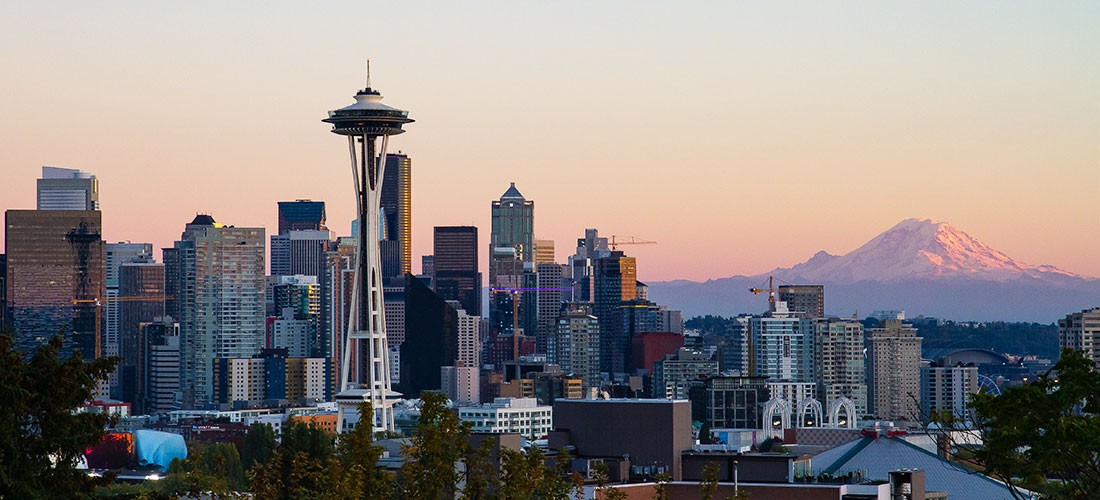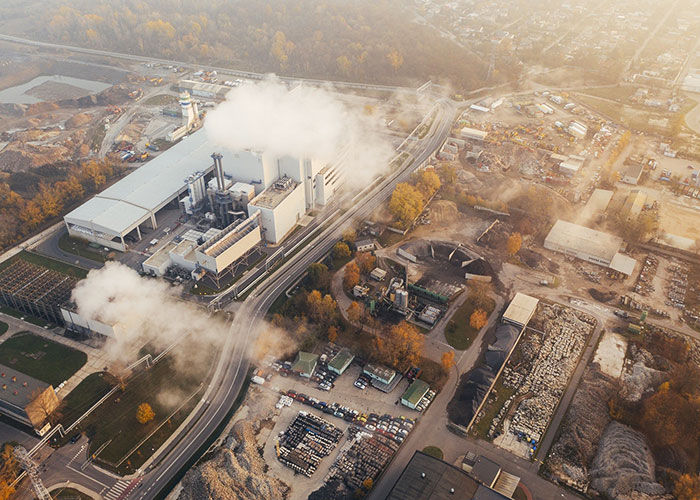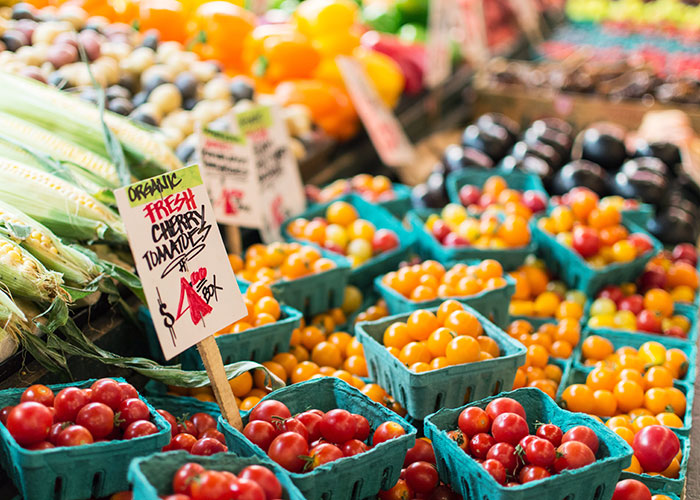Growing Resilience: Garden Planning for a Changing Climate
Whether we realize it or not, gardeners are already part of the solution when it comes to climate change.
In a fast-paced culture that pushes expansion at all costs, the humble act of caring for the soil might well be considered revolutionary. Regardless of the sizes and styles of our gardens, we gardeners are already working to rebuild soils, ecosystems, and human relationships. That’s work that our world needs.
With that in mind, we can plan for climate resilience in our individual gardens as well as our communities. Planning ahead will make the coming changes easier on us, and it might just help us become better gardeners. Even better, we can reap these benefits while also taking part in the larger changes needed to reverse climate change.
Let’s roll up our sleeves and grow some climate resilience!
Climate Change in the Pacific Northwest: What to Expect
Although weather naturally varies from year to year, scientists think the “weird” weather we've been experiencing in the last five years will become the new “normal” within the next 50. We’ll continue to feel our summers heating up and drying out, while our winters will stay overall warmer and the intensity of winter rain and snow will increase.
We’ll be dealing with more summer droughts and more winter floods, as well as changes to our ecosystems such as increased forest fires and new pest invasions. In our gardens, we might find that the plants that once thrived now struggle, and that species we considered out of place now feel at home.
Home-Grown Climate Resilience
Imagining all of these changes can feel overwhelming. Fortunately, we gardeners have a valuable opportunity to make a difference. Here are six ways you can help your garden thrive in the face of climate change while contributing to community climate resilience.
1. Start with the Soil
Healthy soil is the foundation of a resilient garden. It’s also an excellent “sink,” or long-term storage system, for carbon that would otherwise contribute to climate change.
How it helps you: Take care of your soil ecology, and it will take care of you. Healthy soil rich in organic matter will grow vibrant ornamental plants and nutritious edibles. It will also feed your plants naturally and store water to be used as needed, both of which cut down on input costs.
How it grows resilience: Plants take carbon dioxide, a major greenhouse gas, out of the air. Healthy soil can store it for the long haul. If you make your own compost or participate in a municipal composting system, so much the better. By giving your food scraps and yard waste to organisms that will turn them into compost, you are recycling nutrients here on the ground that would otherwise become part of the problem in the atmosphere. Healthy soil is also practically a prerequisite for many of the other steps on this list, so read on for even more benefits.
What to do: Organic matter is the foundation of healthy, living soil. You can make your own compost, either in an open compost pile or in a worm bin. But if making compost isn’t for you, compost and organic mulch is available for purchase, and you can compost your food scraps and yard waste through your municipal compost system. Using mulch and cover crops to protect your soil, especially in the winter, will keep your soil ecosystems happy and healthy from year to year.
2. Plant for the Future
"Right plant, right place” is a favorite gardening motto, but a changing climate means we need to adjust our ideas about what plants belong where.
How it helps you: By planting species and varieties that will thrive in your garden well into the future, and grouping them based on their needs, you’ll be saving yourself frustration and money. Your plants will be healthier and therefore require less from you in terms of fertilizer, water, and pest management.
How it grows resilience: Cutting down on inputs like water and fertilizer is important for protecting your local ecosystem and the planet. Synthetic fertilizers use oil as a raw material, and even the production and transportation of packaged organic fertilizers requires energy. As our summer droughts get more severe, water-wise gardening will be more important than ever. In addition to passing carbon into the soil for long-term storage, plants are carbon sinks in their own right. Resilient, long-lived perennials can actually lock down climate-warming carbon for many years to come.
What to do: When planning your landscape, consider tough, adaptable species, and remember that diversity is one of the best strategies for resilience. To maximize drought-resistance, you might consider Mediterranean plants such as lavender and rosemary and reliable succulents like sedums. All plants sequester carbon, but long-lived trees and shrubs are the heavy-lifters. Consider drought tolerant plants like Douglas fir, salal, and Oregon grape.
There’s nothing wrong with choosing some more demanding plants, but group your plantings according to their needs. That way, you can give particular plants the additional care they need without wasting resources on the ones that can thrive with fewer resources. You can also use practices like drip irrigation, organic fertilization, and mulching to care for your plants as sustainably as possible.
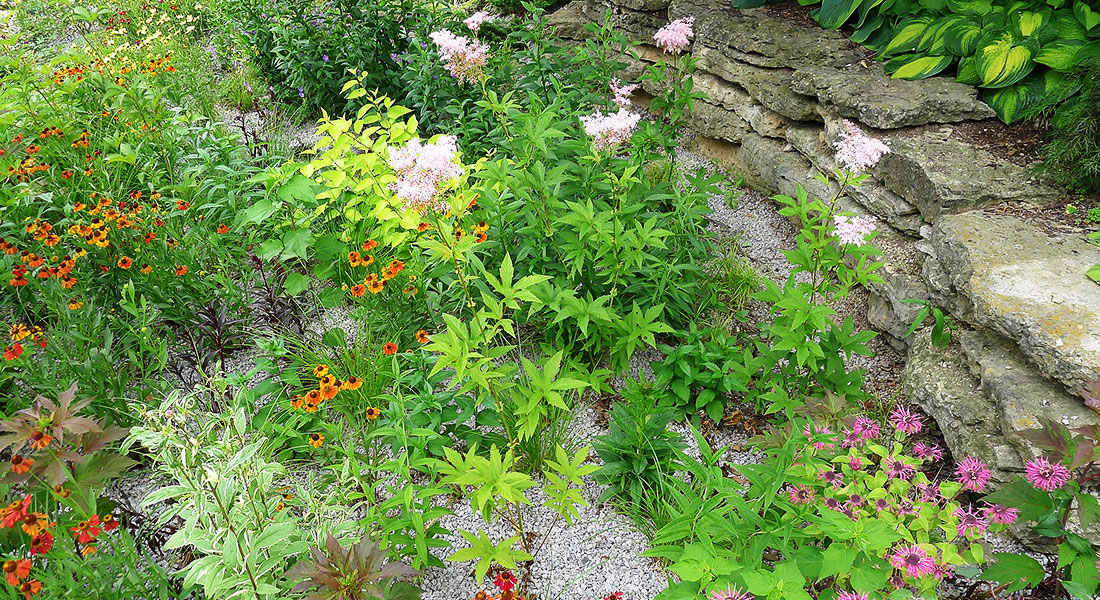 3. Manage Water Naturally
3. Manage Water Naturally
We’ll be dealing with increasing water runoff in the winter, which can be very harmful to aquatic ecosystems. But our gardens can acts as buffers to protect other species as well as our own space.
How it helps you: Water is one of the basic ingredients of healthy gardens, and it can be tricky even for experienced gardeners to get the dosage just right. Many of us struggle with boggy areas in the winter and with parched, crusty soils in the summer. Taking a holistic, nature-driven approach to water management can help mitigate these irrigation headaches.
How it grows resilience: Managing excess water in the winter is going to be at least as much of a challenge for this region as coping with drought in the summer. Heavy rainfall can overwhelm our sewer systems and wash all sorts of toxins into our waterways. Individuals, communities, and local governments are increasingly turning to green infrastructure to help solve this problem, and gardeners have an important role to play.
What to do: If you tend to any soil at all, you’ve already taken a first step. Healthy soil naturally soaks up water and releases it slowly over time. Rain gardens, which maximize this sponge-like soil superpower, are a growing trend, and they are a great option for those who have the resources to build them correctly. A word of caution, though: building them correctly is no quick or simple project! But if you read up on rain gardens and find the time and planning involved overwhelming, don’t worry! Conservation landscaping and installing cisterns are lower-investment options that will still go a long way.
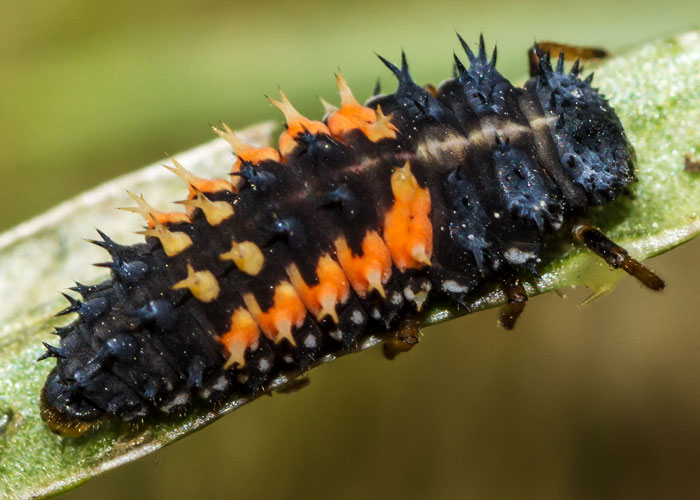
4. Reduce or eliminate chemical use
If we want to be part of the solution, we need to embrace non-toxic ways to manage our landscapes. (Like ladybugs, whose larvae are pictured above!)
How it helps you: We’ve written before about the potential benefits of going pesticide-free. In short, relying on natural systems to maintain a balance in your garden may require a bit more work and patience up-front, but it can save you time and money in the long run. And a healthier environment for wildlife also means a healthier environment for you.
How it grows resilience: Being conscientious about chemical use is an important part of protecting our fragile ecosystems in the face of a changing climate. Wildlife gardeners provide valuable habitat for animals from bees to peregrine falcons. Climate change and land use changes are already placing a lot of stress on our ecosystems, but we gardeners can provide safe havens to help mitigate these impacts.
What to do: Build your garden from the ground up to create a resilient, self-sustaining ecosystem. Get to know your bugs and weeds so that you can pinpoint the best pest management strategies. Whenever possible, prevent pest problems by using floating row covers or other barriers. We’re always happy to guide gardeners to non-toxic solutions to their garden challenges.
5. Take part in local food systems
It’s no wonder that more and more of us are getting interested in local and sustainable food. While individual farmers are not to blame (in fact, many farmers who find themselves stuck using methods they know are harmful are big advocates of better policies), the unsustainable food system that has come to dominate global agriculture is a major driver of climate change. Gardeners are in a unique position to be part of the solution.
How it helps you: Most of us know by now the individual benefits of eating local and sustainable. Foods that are good for the Earth are also good for you and your family, delivering more nutrients and fewer toxins. Growing some of our own food and/or buying from local farmers also helps connect us to the natural world and one another.
How it grows resilience: Anything we can do to help build a sustainable food system is a step towards a better world. Spurred in part by the increasing pressures climate change puts on our fragile food systems, the movement towards sustainable, local food is quickly gathering momentum. While this is a global issue, local action is a huge part of the solution.
What to do: Participating in local and sustainable food systems doesn’t have to be all or nothing. Some of us might have the time and resources to grow most of our own food and even share with neighbors. Others might supplement their diets with a few vegetables and herbs that they can grow in containers. Some who have extra land allow neighbors to start vegetable gardens in their yards in exchange for a share of the produce. You can also support your local farmers by shopping at farmer’s markets, visiting farm stands, or joining a CSA (community support agriculture) program. And you can support We can help you start your first vegetable garden or take your urban farm to the next level here at Sky. Seattle Tilth is also an invaluable resource.
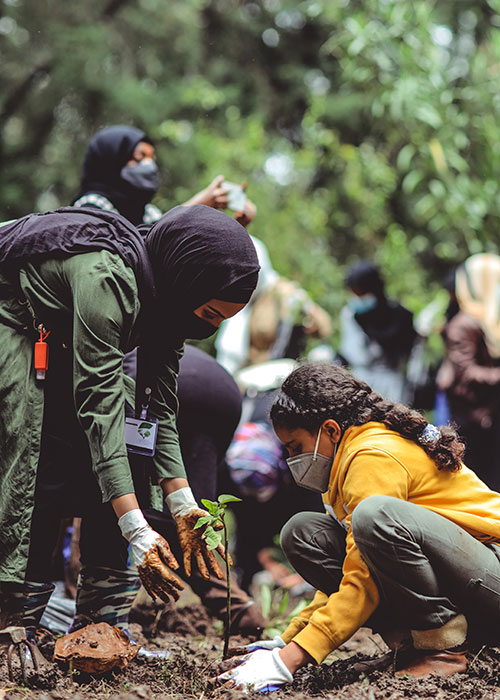 6. Build community
6. Build community
Independence can be a good thing, but too much of it can become divisive and destructive. With a little planning and creativity, you can turn your garden into a resource for community healing.
How it helps you: Building connections, sharing resources, helping others, and free stuff. What’s not to love?
How it grows resilience: Extreme individualism both drives climate change due to overconsumption and exacerbates its effects on our most vulnerable people due to isolation. And although our individual actions might be small by themselves, many small actions linked together grow into a movement. Building connections and community is one of the most important things we can do to grow climate resilience.
What to do: Gardeners have a rich tradition of sharing and trading. Whether our currency is land, tools and equipment, produce, livestock, or time, we’ve always relied on our neighbors and shared what we had in return. There are plenty of ways to plug into sharing and trading networks that already exist, such as tool libraries and seed libraries. There are also some amazing local organizations, such as the Black Farmer's Collective working for a food system that is not only more ecologically sustainable but also more socially just, and many of them offer regular volunteering opportunities.
Do you have ideas to share?
We hope these ideas might inspire you to grow a little climate change resilience in your garden this year. Do you have other ideas, success stories, or questions? We’d love to hear from you in the comments!
Originally posted in 2015, revitalized 2021.

